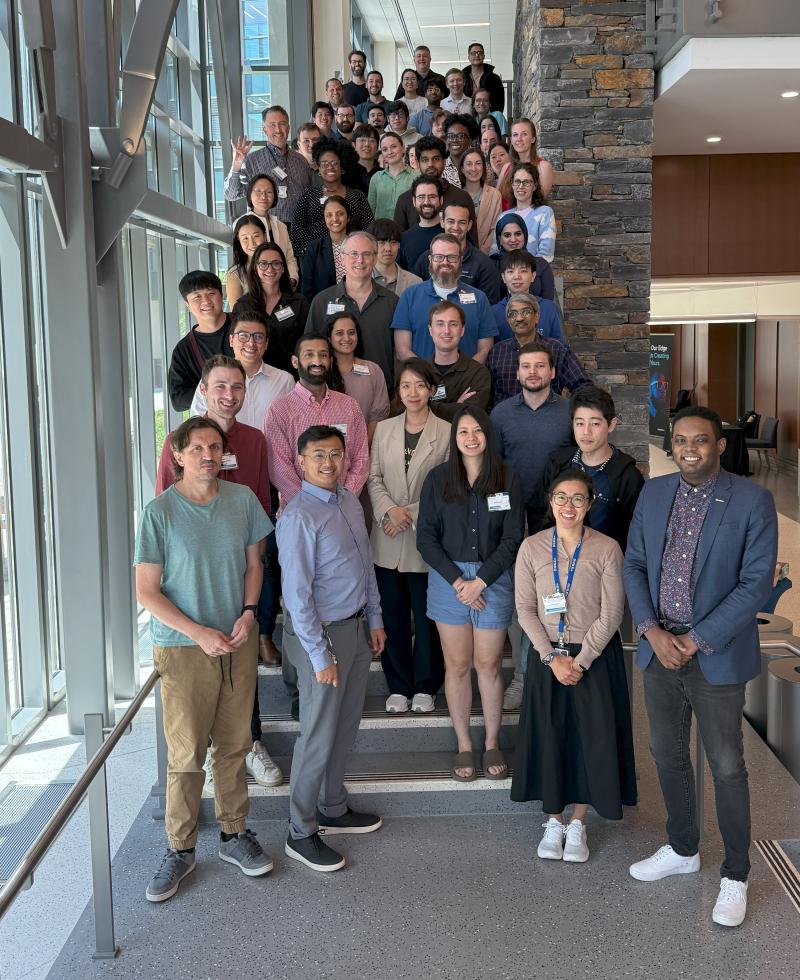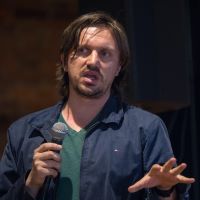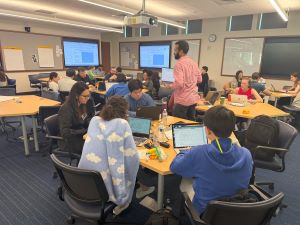
Over one whirlwind weekend in April, Duke Health’s Center for Interprofessional Education and Care buzzed with the energy of over 60 clinicians, data scientists, and students united by a common purpose: to tackle urgent problems in critical and acute care using real-world data and collaborative innovation.
The 2025 Duke Critical/Acute Care Datathon brought together eight interdisciplinary teams for a weekend of rapid research, mentorship, and data-driven discovery. Organized in part by Dr. A. Ian Wong, assistant professor of Medicine and Dr. Ricardo Henao, associate professor of biostatistics & bioinformatics, both experts in clinical data science, the event was co-sponsored by Duke Artificial Intelligence (AI) Health, CHoRUS (Clinical Care AI through the CHoRUS Network), the Society of Critical Care Medicine, the Department of Biostatistics & Bioinformatics, Duke Master in Interdisciplinary Data Science (MIDS), Duke Anesthesiology, and Duke Pulmonary, Allergy, and Critical Care Medicine.

“I was excited to see the excitement, energy, and enthusiasm among both data scientists and clinicians,” Dr. Wong said. “Everyone was humble to come together—from students through senior attendings—and get their hands dirty working together in teams they didn’t know the week prior.”
The event kicked off on April 25 with a symposium featuring keynote speakers including Senior Vice President and Chief Digital Officer at Duke Health and Executive Director of the Duke Institute for Health Innovation, Jeffrey Ferranti, MD, the Gilbert, Louis, and Edward Lehrman Distinguished Professor of Computer Science at Duke, Cynthia Rudin , PhD, Associate Professor of Medicine in general internal medicine, Jonathan Bae, MD, CPPS, and the Director of the Duke Clinical Research Institute's Data Science and Department of Biostatistics Chris Lindsell, PhD. Over the following two days, teams worked intensively on projects grounded in four major datasets, including new access to K-MIMIC (from Seoul National University), CHoRUS, and Epic Cosmos.

Teams were formed intentionally to balance skill sets and backgrounds. When registering, participants indicated their expertise—whether clinical, computational, or research-focused—and were then matched into groups designed to promote cross-disciplinary collaboration. Each team received a broad research prompt based on their interests but was encouraged to refine their focus over the weekend.
Mentorship played a central role in the Datathon’s success. Seven mentors—including biostatisticians, data scientists, and clinicians—circulated throughout the event, checking in with teams, helping frame questions, clarifying statistical approaches, and navigating the nuances of the datasets. Over a dozen more “seed data scientists” – both clinicians and data scientists familiar with datasets and informatics techniques – joined every team to give a strong core for the weekend. Finally, every team received an expert from Epic Cosmos to help them translate to the wider United States population.
Pedro Moreira, a data science student from MIT, described his team’s project as an attempt to move beyond standard ICU scoring systems like Sequential Organ Failure Assessment (SOFA) and Acute Physiology and Chronic Health Evaluation (APACHE) to predict mortality. “We’re using explainable AI, like SHapley Additive exPlanations (SHAP) scores, to show what’s driving mortality risk in real time—so if your O₂ drops, that risk spike becomes actionable for the care team,” he said.
Other teams took on topics ranging from ED-to-ICU patient disposition to predicting mechanical ventilation needs. Erlinda Laska, a Duke Primary Care team member, said her group was looking at whether machine learning could help identify patients likely to require vasopressors before they deteriorate. “We’re hoping this could eventually help catch patients earlier—before they even reach the ICU,” she explained.

Several teams tested cutting-edge AI models. One project evaluated how large language models such as GPT-4, perform in recommending clinical management for ICU patients, before and after integrating sepsis guidelines into a retrieval-augmented generation pipeline. “It’s the same model,” one participant explained, “but with the guidelines, it performs much better. That was a surprising and exciting result.”
International collaboration added another layer of richness. Hanseul Kim, a researcher from Seoul National University, whose team helped develop and provide the K-MIMIC dataset, explained, “By Korean privacy laws, this data is only available in a special closed environment for research. Our team built the platform to make it usable during the Datathon.” Several teams chose to work with the dataset, highlighting its unique value and global applicability.
The weekend concluded with presentations from each team, judged by a panel of faculty and industry partners. Awards included a Grand Prize tie between Team Four ("SpO₂ial Forces") and Team Eight, and the NVIDIA/Mark III Prize for innovation. Teams also received support from collaborators like Cloudforce, whose nebulaONE platform was used by several participants to analyze clinical data with AI. Their consultants’ involvement helped enhance both the technical rigor of the projects and the mentorship around Microsoft’s AI services on Azure available to the participants.